Abdulrezzak Zekiye
AI-Assisted Investigation of On-Chain Parameters: Risky Cryptocurrencies and Price Factors
Aug 11, 2023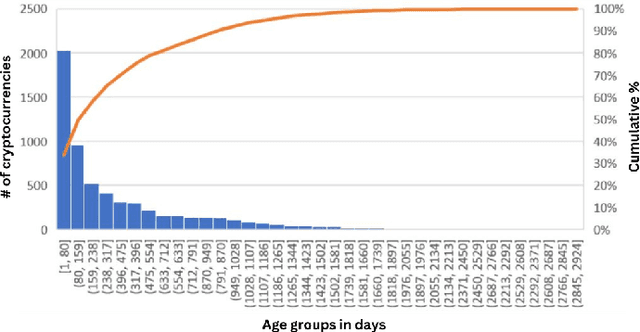
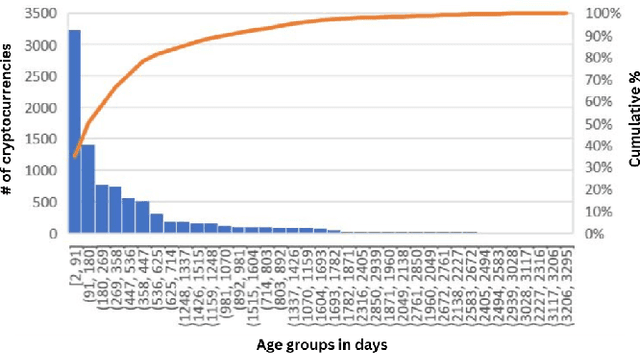
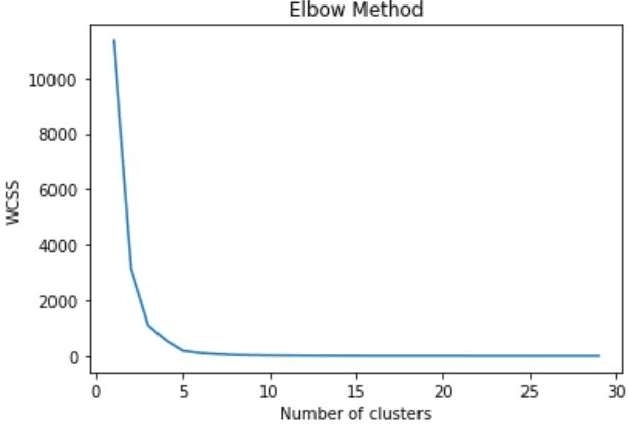
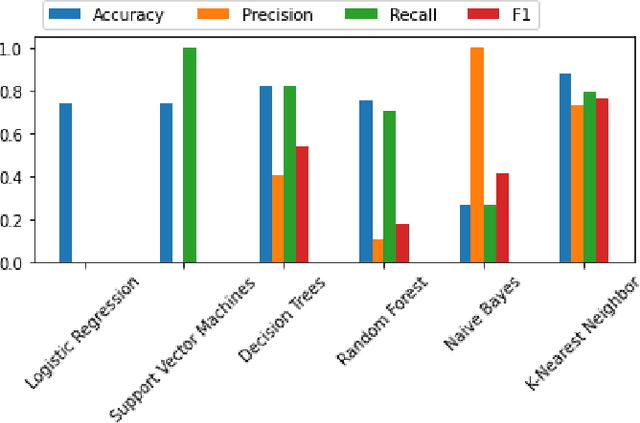
Abstract:Cryptocurrencies have become a popular and widely researched topic of interest in recent years for investors and scholars. In order to make informed investment decisions, it is essential to comprehend the factors that impact cryptocurrency prices and to identify risky cryptocurrencies. This paper focuses on analyzing historical data and using artificial intelligence algorithms on on-chain parameters to identify the factors affecting a cryptocurrency's price and to find risky cryptocurrencies. We conducted an analysis of historical cryptocurrencies' on-chain data and measured the correlation between the price and other parameters. In addition, we used clustering and classification in order to get a better understanding of a cryptocurrency and classify it as risky or not. The analysis revealed that a significant proportion of cryptocurrencies (39%) disappeared from the market, while only a small fraction (10%) survived for more than 1000 days. Our analysis revealed a significant negative correlation between cryptocurrency price and maximum and total supply, as well as a weak positive correlation between price and 24-hour trading volume. Moreover, we clustered cryptocurrencies into five distinct groups using their on-chain parameters, which provides investors with a more comprehensive understanding of a cryptocurrency when compared to those clustered with it. Finally, by implementing multiple classifiers to predict whether a cryptocurrency is risky or not, we obtained the best f1-score of 76% using K-Nearest Neighbor.
Blockchain-based Federated Learning for Decentralized Energy Management Systems
Jun 23, 2023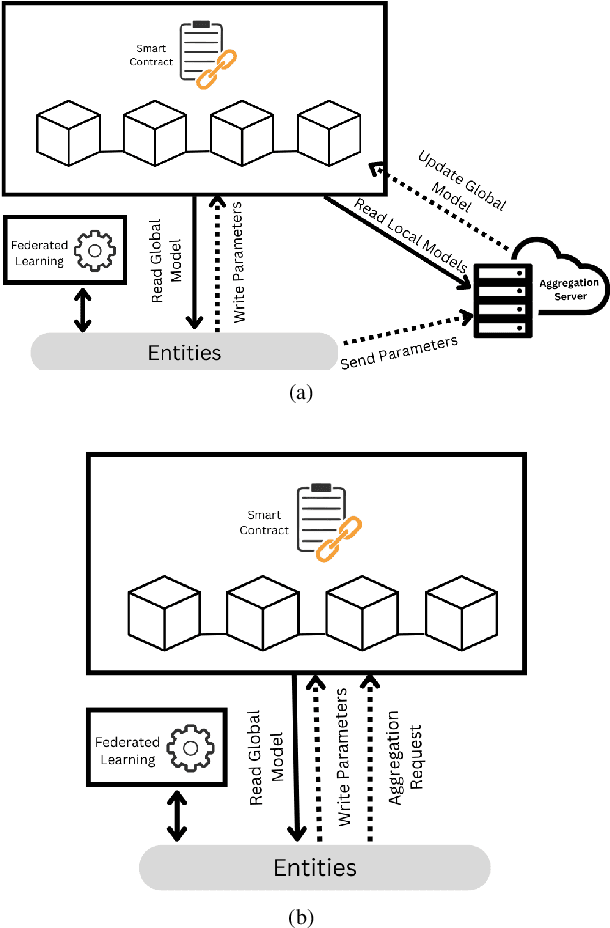
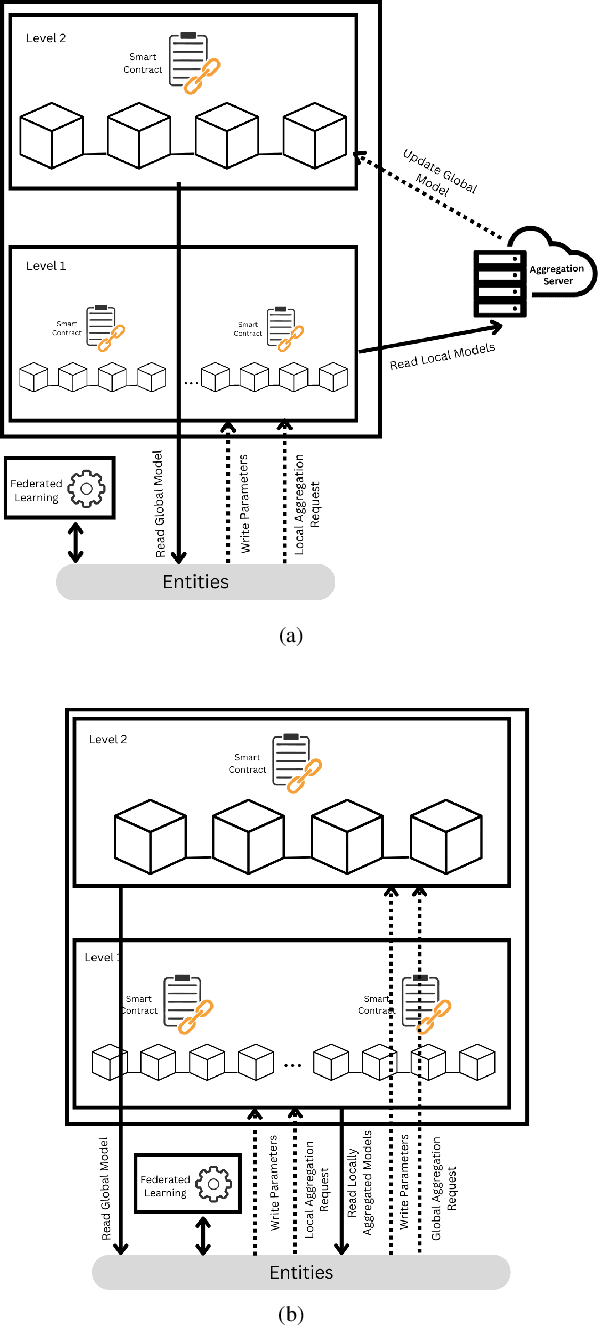
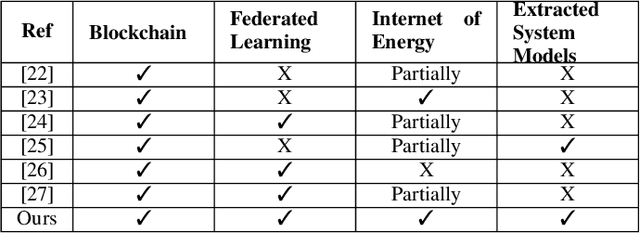

Abstract:The Internet of Energy (IoE) is a distributed paradigm that leverages smart networks and distributed system technologies to enable decentralized energy systems. In contrast to the traditional centralized energy systems, distributed Energy Internet systems comprise multiple components and communication requirements that demand innovative technologies for decentralization, reliability, efficiency, and security. Recent advances in blockchain architectures, smart contracts, and distributed federated learning technologies have opened up new opportunities for realizing decentralized Energy Internet services. In this paper, we present a comprehensive analysis and classification of state-of-the-art solutions that employ blockchain, smart contracts, and federated learning for the IoE domains. Specifically, we identify four representative system models and discuss their key aspects. These models demonstrate the diverse ways in which blockchain, smart contracts, and federated learning can be integrated to support the main domains of IoE, namely distributed energy trading and sharing, smart microgrid energy networks, and electric and connected vehicle management. Furthermore, we provide a detailed comparison of the different levels of decentralization, the advantages of federated learning, and the benefits of using blockchain for the IoE systems. Additionally, we identify open issues and areas for future research for integrating federated learning and blockchain in the Internet of Energy domains.
 Add to Chrome
Add to Chrome Add to Firefox
Add to Firefox Add to Edge
Add to Edge